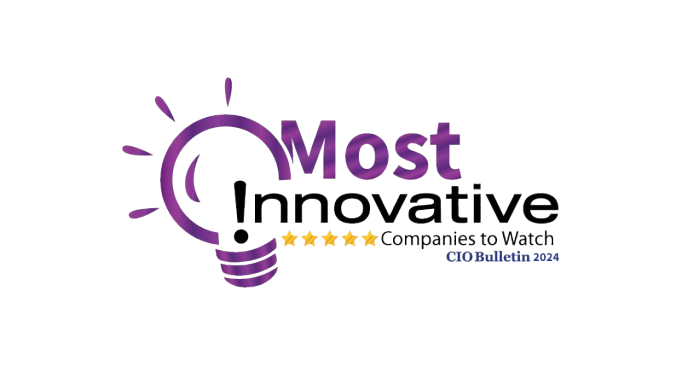DA, PA, TB, QB, PQ, MT, SS, MR, and OS in SEO Keyword Research
January 17, 2024
In today's digital age, understanding the intricacies of SEO (Search Engine Optimization) is crucial for anyone aiming to make their mark online. Among the many aspects of SEO, keywords play a pivotal role in determining a website's success in search engine rankings. In this comprehensive article, we will delve into the world of SEO Keyword Research, focusing on DA, PA, TB, QB, PQ, MT, SS, MR, and OS. These acronyms may seem like a jumble of letters, but they hold the key to unlocking your website's potential in the online realm.
Demystifying DA (Domain Authority)
DA, or Domain Authority , is a metric developed by Moz that indicates the strength and credibility of a website's domain. It is measured on a scale from 1 to 100, with higher scores signifying greater authority. Search engines often prioritize websites with high DA, considering them more reliable sources of information.Having a high DA can significantly boost your website's visibility in search results. To improve your DA, focus on creating high-quality content, earning backlinks from reputable websites, and ensuring your site is technically sound.
The Significance of PA (Page Authority)
PA, or Page Authority , complements DA by measuring the authority of individual pages within a website. It, too, operates on a scale of 1 to 100. PA is influenced by various factors, including the number and quality of backlinks to a specific page.Optimizing your pages for higher PA involves creating valuable, well-researched content, and obtaining relevant backlinks. By enhancing your page authority, you can increase the visibility of specific pages in search results.
The Role of TB (Traffic Boost)
TB, or Traffic Boost , is all about increasing the volume of visitors to your website. It encompasses strategies to attract more organic traffic, which is crucial for achieving better rankings on search engine results pages (SERPs).Effective ways to boost your website's traffic include optimizing your content for search engines, promoting your content on social media, and utilizing email marketing. By driving more visitors to your site, you can enhance its overall performance.
Unpacking QB (Quality Backlinks)
QB, or Quality Backlinks , are an essential component of SEO. These are links from external websites that point to your content. However, not all backlinks are created equal. Quality backlinks come from authoritative, relevant sources and can significantly impact your website's rankings.Building quality backlinks requires outreach, guest posting, and creating shareable content that naturally attracts links. A robust backlink profile can catapult your website to the top of search results.
Probing PQ (Page Quality)
PQ, or Page Quality , refers to the overall quality and relevance of a specific page on your website. Search engines assess PQ to determine if your content is valuable to users.To improve PQ, focus on creating comprehensive, well-researched, and engaging content. Additionally, ensure your pages load quickly, are mobile-friendly, and offer a seamless user experience.
The Power of MT (Mobile-friendliness)
MT, or Mobile-friendliness , is no longer an option but a necessity. With the majority of internet users accessing websites via mobile devices, search engines prioritize mobile-friendly websites in their rankings.Make sure your website is responsive and offers a smooth browsing experience on smartphones and tablets. This not only improves your search engine rankings but also enhances user satisfaction.
Navigating SS (Site Structure)
SS, or Site Structure , refers to how your website is organized and how easy it is for users and search engines to navigate. A well-structured site not only improves user experience but also helps search engines understand your content better.Organize your content logically, use clear and descriptive headings, and create an intuitive menu structure. This will make it easier for both users and search engine crawlers to find and index your content.
Mastering MR (Mobile Responsiveness)
MR, or Mobile Responsiveness , is closely related to MT but focuses on how your website adapts to different screen sizes and orientations. A responsive design ensures that your website looks and functions well on all devices, from smartphones to large desktop screens.Investing in a responsive website design is essential to cater to the diverse needs of your audience. It not only improves user experience but also positively impacts your SEO efforts.
Optimizing OS (On-Page SEO)
OS, or On-Page SEO , encompasses all the strategies and techniques you employ directly on your web pages to improve their search engine rankings. This includes optimizing meta tags, headers, content, images, and more.To excel in OS, conduct thorough keyword research, use descriptive titles and meta descriptions, and optimize your content for relevant keywords. Effective on-page SEO can make a significant difference in your website's visibility on search engines.
Frequently Asked Questions (FAQs)
Q : What is the ideal DA score for a website? A : While there's no specific ideal score, aiming for a DA above 50 is generally considered a good target.Q : How can I improve my website's PA? A : To enhance your Page Authority, focus on creating high-quality content, earning quality backlinks, and optimizing your pages for SEO.
Q : What are some effective ways to boost website traffic? A : You can boost traffic through SEO, social media marketing, email marketing, and content promotion.
Q : What is the importance of mobile-friendliness in SEO? A : Mobile-friendliness is crucial as search engines prioritize mobile-responsive websites, and a large portion of users access websites on mobile devices.
Q : How can I optimize my site structure for better SEO? A : Optimize your site structure by organizing content logically, using descriptive headings, and creating an intuitive navigation menu.
Q : What are some common on-page SEO techniques? A : On-page SEO techniques include keyword optimization, meta tag optimization, header tags, image optimization, and content quality improvement.
Conclusion
In the dynamic world of SEO, understanding and harnessing the power of DA, PA, TB, QB, PQ, MT, SS, MR, and OS is essential for success. These elements are the building blocks of a strong online presence and can propel your website to the top of search engine rankings. By focusing on these aspects and implementing effective strategies, you can establish your website as a trusted and authoritative source in your niche.Remember, SEO is an ongoing process, and staying updated with the latest trends and best practices is key to maintaining and improving your website's performance in the ever-evolving digital landscape. So, embrace the world of SEO Keyword Research, and watch your online presence soar to new heights!
Featured Resources
Check Our Latest Resources

October 23, 2024
Proven ROI has been recognized as one of the Most Innovative Companies to Watch 2024 by CIO Bulletin—a testament to the company’s forward-thinking approach to CRM investments and strategic partnerships. By working closely with leading CRM platforms like HubSpot, Proven ROI is revolutionizing how businesses manage customer relationships, scale their operations, and drive growth.
Contact us today
Take Your Digital To The Next Level With Proven ROI
Thank you for contacting us.
We will get back to you as soon as possible.
We will get back to you as soon as possible.
Oops, there was an error sending your message.
Please try again later.
Please try again later.
NAVIGATION



